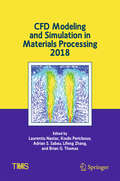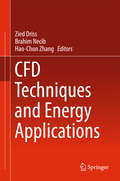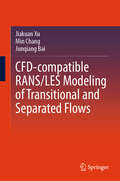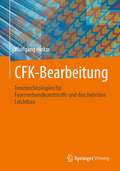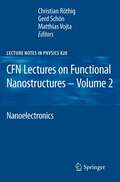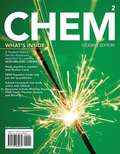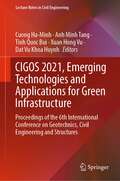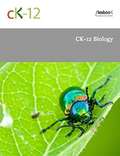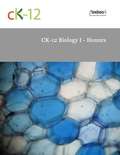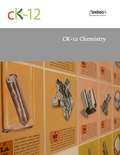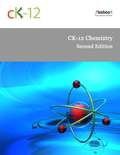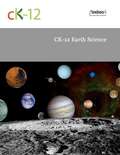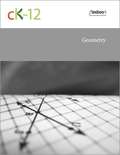- Table View
- List View
CCN proteins in health and disease: An overview of the Fifth International Workshop on the CCN family of genes
by Annick Perbal Masaharu Takigawa Bernard PerbalThe CCN family of genes currently comprises six secreted proteins (designated CCN16 i.e., Cyr61/CCN1; ctgf/CCN2; Nov/CCN3; WISP1/CCN4; WISP2/CCN5, and WISP3/CCN6) showing a strikingly conserved primary structure, with four modules sharing partial identity with IGF binding proteins, Von Willebrand protein, thrombospondin and several matricellular proteins and growth factors. The current view is that CCN proteins modulate signaling pathways that involve regulatory components of the extracellular matrix. As such, they likely act as a central hub in the regulation of mitosis, adhesion, apoptosis, extracellular matrix production, growth arrest and migration of multiple cell types. The 5th international workshop on the CCN family of genes, that was held in Toronto in 2008 brought together scientists from around the world who have an interest in the biological roles of this emerging family of proteins. On an educational point of view, the workshop was a unique place for an efficient diffusion of scientific information. The present book comprises a series of selected manuscripts that are based on the original communications that were presented at the meeting by worldwide leaders in the field of CCN biology. All major aspects of CCN proteins biology in both normal and pathological conditions are covered in this volume, from structure-functions analysis up to the involvement of CCN proteins in complex physiological functions. In addition to reports that support the Yin-Yang concept of CCN proteins driving opposite effects on the same biological process, this book also comprises several contributions that point to CCN proteins as amenable targets for therapeutic manipulation of disease processes. Together with the special issue of Journal of Cell Communication and Signaling in which authors have extended on the original data presented at the meeting, the present Proceedings provide an instant picture and unique update of the state of the art in the CCN field.
CERN - In den Kathedralen der Technologie
by Michael KrauseBegegnungen am CERN - Menschen, die die Geheimnisse des Universums entschlüsseln/Michael Krause stellt sie uns vorEine >wissenschaftliche Sensationhistorischer MeilensteinGottesteilchensdas Thema dieses Buches.Träume, Visionen, Forschungen: die Menschen stehen im Mittelpunkt Das >GottesteilchenDunklen MaterieDunklen Energiesogenannten >Neuen PhysikEine Auswahl an Interviewpartnern von Michael Krause -- Top-Wissenschaftler am CERN, die einen großen Anteil am Nachweis des Higgs-Boson und damit zum Physik-Nobelpreis 2013 beigetragen haben.Rolf-Dieter Heuer, als Generaldirektor des CERN dafür zuständig, dass das CERN mit all seinen verschiedenen Experimenten und den 10000 Mitarbeitern, reibungslos funktioniertTejinder Virdee, Chefarchitekt des sogenannten "CMS-Experiments", eines "Allround-Apparats, der der Suche nach dem Higgs-Boson und Dunkler Materie" dient (Zitat aus dem Buch)Lyndon Evans, Projektleiter für den Bau des LHC (Large Hadron Collider), an dem die Kernexperimente stattfanden, um das Higgs-Boson nachzuweisenTara Shears, im Rahmen des sogenannten LHCb-Experiments hauptsächlich damit befasst, das Standardmodell der Teilchenphysik, zu dem das Higgs-Boson gehört, zu testenJohn Ellis, der meistzitierte Physiker aller Zeiten, hat die Bezeichnung "Theory of Everything" (Theorie für alles) geprägt; er hat viel zum theoretischen Verständnis des Standardmodells beigetragen, zu dem das Higgs-Boson gehört, und befasst sich auch mit Theorien jenseits des StandardmodellsJonathan Butterworth leitet einen Teil des sogenannten ATLAS-Experiments, das ebenfalls zum Nachweis des Higgs-Bosons durchgeführt wurde
CFD Modeling and Simulation in Materials Processing 2018 (The Minerals, Metals & Materials Series)
by Adrian S. Sabau Lifeng Zhang Brian G. Thomas Koulis Pericleous Laurentiu NastacThis collection presents contributions on computational fluid dynamics (CFD) modeling and simulation of engineering processes from researchers and engineers involved in the modeling of multiscale and multiphase phenomena in material processing systems. The following processes are covered: Additive Manufacturing (Selective Laser Melting and Laser Powder Bed Fusion); Ironmaking and Steelmaking (Ladle Metallurgical Furnace, EAF, Continuous Casting, Blown Converter, Reheating Furnace, Rotary Hearth Furnace); Degassing; High Pressure Gas Atomization of Liquid Metals; Electroslag Remelting; Electrokinetic Deposition; Friction Stir Welding; Quenching; High Pressure Die Casting; Core Injection Molding; Evaporation of Metals; Investment Casting; Electromagnetic Levitation; Ingot Casting; Casting and Solidification with External Field (electromagnetic stirring and ultrasonic cavitation) Interaction and Microstructure Evolution The collection also covers applications of CFD to engineering processes, and demonstrates how CFD can help scientists and engineers to better understand the fundamentals of engineering processes.
CFD Techniques and Energy Applications
by Zied Driss Brahim Necib Hao-Chun ZhangThis book focuses on CFD (Computational Fluid Dynamics) techniques and the recent developments and research works in energy applications. It is devoted to the publication of basic and applied studies broadly related to this area. The chapters present the development of numerical methods, computational techniques, and case studies in the energy applications. Also, they offer the fundamental knowledge for using CFD in energy applications through new technical approaches. Besides, they describe the CFD process steps and provide benefits and issues for using CFD analysis in understanding the flow complicated phenomena and its use in the design process. The best practices for reducing errors and uncertainties in the CFD analysis are further described. The book reveals not only the recent advances and future research trends of CFD Techniques but also provides the reader with valuable information about energy applications. It aims to provide the readers, such as engineers and PhD students, with the fundamentals of CFD prior to embarking on any real simulation project. Additionally, engineers supporting or being supported by CFD analysts can take advantage from the information of the book’s different chapters.
CFD Techniques and Thermo-Mechanics Applications
by Zied Driss Brahim Necib Hao-Chun ZhangThis book focuses on CFD (Computational Fluid Dynamics) techniques and the recent developments and research works in thermo-mechanics applications. It is devoted to the publication of basic and applied studies broadly related to this area. The chapters present the development of numerical methods, computational techniques, and case studies in the thermo-mechanics applications. They offer the fundamental knowledge for using CFD in real thermo-mechanics applications and complex flow problems through new technical approaches. Also, they discuss the steps in the CFD process and provide benefits and issues when using the CFD analysis in understanding of complicated flow phenomena and its use in the design process. The best practices for reducing errors and uncertainties in CFD analysis are also discussed. The presented case studies and development approaches aim to provide the readers, such as engineers and PhD students, the fundamentals of CFD prior to embarking on any real simulation project. Additionally, engineers supporting or being supported by CFD analysts can benefit from this book.
CFD-Compatible RANS/LES Modeling of Transitional and Separated Flows
by Jiakuan Xu Min Chang Junqiang BaiThis book investigates in detail boundary layer transition-turbulence modeling methods, which is a hot research topic in fluid mechanics and aerospace engineering. It introduces detailed physical model construction ideas and extensive calculation examples, which will enable readers to learn how to choose the correct model to use, understand the whole process of physical model construction, and learn how to develop new models. Studies on transition-turbulence models have attracted engineers and scientists from various disciplines, such as aerospace engineering, wind energy, ocean engineering and engine engineering. Pursuing a holistic approach, the book establishes several classical/representative transition-turbulence models for engine internal and external flows, while emphasizing the importance of PDE transport equation establishment and local computation methods for non-local variables. It is intended for post-graduate students and researchers who are interested in computational fluid dynamics and transition-turbulence.modeling or aerodynamic shape design (laminar flow design and control).
CFD-Modellierung: Grundlagen und Anwendungen bei Strömungsprozessen
by Rüdiger SchwarzeIn diesem kompakten Lehrbuch legt der Autor die Methodik der numerischen Simulation von Strömungsprozessen dar. Nach einer konzisen Erläuterung der Grundlagen lernen Leser das Potenzial der Methodik anhand von Anwendungsbeispielen kennen. Demonstriert werden sowohl einfache wie komplexe Probleme. Während Leser die einfachen Problemstellungen mithilfe von Open-Source-Softwarepaketen selbst bearbeitet können, sind die komplexen Beispiele aus aktuellen grundlagenorientierten und aus anwendungsnahen Forschungsprojekten des Autors abgeleitet.
CFK-Bearbeitung: Trenntechnologien für Faserverbundkunststoffe und den hybriden Leichtbau
by Wolfgang HintzeDas Buch beschreibt systematisch die industriell bedeutsamen Bearbeitungstechnologien für kohlenstofffaserverstärkte und artverwandte Kunststoffe sowie für den hybriden Leichtbau.Die technologischen Grundlagen der spanenden Verfahren, der abtragenden Verfahren mittels Abrasivwasserstrahl und mittels Laserstrahl sowie die Grundlagen des spanlosen Trennens werden methodisch dargestellt. Geeignete Modellansätze werden beschrieben. Die Bearbeitbarkeit faserverstärkter Kunststoffe nach den unterschiedlichen Verfahren wird erläutert. Besondere Beachtung finden verfahrensabhängig die erreichbare Qualität, die Einsatzgrenzen, die Aufwände für Werkzeuge und anderweitige Verbrauchsmittel sowie jeweilige Aspekte des Arbeits- und Anlagenschutzes. Damit wird die Leserschaft in die Lage versetzt, für neue Bearbeitungsaufgaben und für bauteilspezifisch konstruierte Faserverbundkunststoffe anforderungsgerechte Lösungen zu entwickeln sowie bestehende Bearbeitungsprozesse systematisch zu analysieren und zu optimieren. Schließlich liefert das Buch eine physikalisch fundierte Grundlage für die Entwicklung datenbasierter Prozessmodelle und zeigt technologische Trends auf.
CFN Lectures on Functional Nanostructures - Volume 2: Nanoelectronics (Lecture Notes in Physics #820)
by Christian Röthig Matthias Vojta Gerd SchönThis series of books contains selected and edited lectures from summer schools organized by the Center for Functional nanostructures (CFN) at the University of Karlsruhe. The mission of the CFN is to carry out research in the following areas: nanophotonics, nanoelectronics, molecular nanostructures and nanostructured materials. The aim of the summer schools is mainly to exchange new ideas and illustrate emerging research methodologies through a series of topical, introductory lectures. This is reflected by both the selection of topics addressed in the present volume, nanoelectronics, as well as the tutorial aspect of the contributions.
CFTR and Cystic Fibrosis
by Carlos M. FarinhaThis Brief is devoted to the CFTR protein and cystic fibrosis, and it provides an updated perspective of the genetic, functional and cellular processes involved in this conformational disorder. Starting with a historical perspective on cystic fibrosis and its clinical features, the author departs into an in-depth description of the biology of the CFTR protein, ending with a discussion on the latest approaches aimed at developing corrective therapies for cystic fibrosis.First the basic aspects of cystic fibrosis as a disorder are addressed, focusing on genetics and mutation prevalence. Then the CFTR protein is discussed in detail: its structure and classification within the ABC transporter superfamily, its biogenesis with membrane insertion and chaperone assisted folding, its glycosylation and how it regulates the endoplasmatic reticulum quality control mechanisms that assess CFTR folding status. Extra attention is given to post-ER trafficking and regulation of membrane stability and anchoring, and to CFTR functions. This is linked to the molecular mechanisms through which different CFTR mutations cause cystic fibrosis. Finally, the different efforts aiming at rescuing the basic defect, most of which aim at repairing CFTR dysfunction, are covered. Through this integrated perspective, readers will obtain a unique insight into this fascinating membrane-bound protein and its associated disease. This Brief appeals to an audience interested in human genetics, protein folding, protein trafficking and physiology.
CHEM2: Chemistry in Your World
by Melvin Joesten John L. HoggCreated by the continuous feedback of a student-tested, faculty-approved process, CHEM2 delivers a visually appealing, succinct print component, tear-out review cards for students and instructors, and a consistent online offering with OWLv2 that includes an eBook in addition to a set of interactive digital tools -- all at a value-based price and proven to increase retention and outcomes. CHEM2 also offers Go Chemistry and Thinkwell mini-video lectures, as well as online homework available through the OWL learning system.
CIGOS 2021, Emerging Technologies and Applications for Green Infrastructure: Proceedings of the 6th International Conference on Geotechnics, Civil Engineering and Structures (Lecture Notes in Civil Engineering #203)
by Cuong Ha-Minh Anh Minh Tang Tinh Quoc Bui Xuan Hong Vu Dat Vu Khoa HuynhThis book highlights the key role of green infrastructure (GI) in providing natural and ecosystem solutions, helping alleviate many of the environmental, social, and economic problems caused by rapid urbanization. The book gathers the emerging technologies and applications in various disciplines involving geotechnics, civil engineering, and structures, which are presented in numerous high-quality papers by worldwide researchers, practitioners, policymakers, and entrepreneurs at the 6th CIGOS event, 2021. Moreover, by sharing knowledge and experiences around emerging GI technologies and policy issues, the book aims at encouraging adoption of GI technologies as well as building capacity for implementing GI practices at all scales. This book is useful for researchers and professionals in designing, building, and managing sustainable buildings and infrastructure.
CK-12 21st Century Physics Flexbook: A Compilation of Contemporary and Emerging Technologies
by Ck-12 FoundationPhysics textbook
CK-12 Biology I (with image descriptions)
by Ck-12 FoundationOpen source biology textbook from CK-12.
CK-12 Biology I - Honors
by Ck-12 FoundationCK-12 Foundation's Biology 1- Honors FlexBook Covers the following chapters:<P><P> Foundations of Life Science- scientific investigations, methods, observations, & communication.<P> Chemical Basis of Life- matter, the significance of carbon, lipids, proteins.<P> Cell Structure and Function- prokaryotic, eukaryotic, plant, & animal cell features; structures / functions of DNA, RNA, protein, cell transport, homeostasis.<P> Photosynthesis- water, carbon, and nitrogen cycle between abiotic and biotic resources.<P> Cellular Respiration- relation to glycolysis, Krebs Cycle, electron transport chain.<P> Cell Division and Reproduction- cell division, reproduction.<P> Mendelian Genetics- inheritance, sex-linked traits.<P> Molecular Genetics- DNA, RNA, protein synthesis, mutation, regulating gene expression.<P> Human Genetics- human genome, diseases, Biotechnology- DNA technology, gene cloning.<P> History of Life- evolution, macroevolution, extinctions, episodic speciation, response to change.<P> Evolutionary Theory- Darwin's Theory of Evolution, common ancestry and natural selection.<P> Evolution in Populations- genetics of populations, genetic diseases, natural selection.<P> Classification- Taxonomy, scientific classification of organisms.<P> Principles of Ecology- Ecology's relation with energy; ecosystems, the water, carbon, and nitrogen cycles.<P> Biomes, Ecosystems and Communities- terrestrial/ aquatic biomes, community interactions.<P> Populations- Analysis of populations and dynamics.<P> Ecology and Human Actions- Balance between humans and the earth addressing natural resources, ecosystems, & biodiversity.<P> The Human Body- systems.<P> Nervous and Endocrine Systems- structures & functions, homeostasis.<P> Skeletal, Muscular, and Integumentary Systems- structures, functions, & homeostasis.<P> Circulatory and Respiratory Systems- structures and functions.<P> Digestive and Excretory Systems- structures/ functions, food pyramid.<P> Immune System and Disease- Body defenses against pathogens.<P> Reproductive System and Human Development- human reproductive systems, reproductive lifecycle, STDs.
CK-12 Calculus
by Ck-12 FoundationCK-12 Foundation's Single Variable Calculus FlexBook covers the following chapters: Functions, Limits, and Continuity - A review of the basics of functions is given. Students use linear approximations to study the limit process, before a more formal treatment of limits is given. Differentiation - Students explore instantaneous rate of change, and the relationship between continuity and differentiability. The Chain Rule and implicit differentiation are reviewed. Applications of Derivatives - Students gain practice with using the derivatives in related rates problems. Additional topics include The First Derivative Test, The Second Derivative Test, limits at infinity, optimization, and approximation errors. Integration - This chapter includes indefinite integrals calculus, initial value problems, definite integrals, the Fundamental Theorem of Calculus, integration by substitution, and numerical integration. Applications of Integration - This chapter includes applications of the definite integral, such as calculating areas between two curves, volumes, length of curves, and other real-world applications in physics and statistics. Transcendental Functions - This chapter includes differentiation and integration of logarithmic and exponential functions, exponential growth and decay, derivatives and integrals involving inverse trigonometric functions, and L'Hospital's Rule. Integration Techniques - Students explore integration by substitution, integration by parts, integration by partial fractions, trigonometric integrals, trigonometric substitutions, and improper integrals. Infinite Series - This chapter introduces the study of sequences and infinite series. The properties presented describe the behavior of a sequence or series, including whether a sequence approaches a number or an infinite series adds to a number.
CK-12 Chemistry
by Ck-12 FoundationCK-12 Foundation's Chemistry FlexBook Covers the following chapters: The Science of Chemistry- scientific method, history, matter, energy. Chemistry: A Physical Science- measurement, formulas. Chemistry in the Laboratory- qualitative vs. quantitative observation. The Atomic Theory- atomic model from Dalton to Rutherford. The Bohr Model of the Atom- electromagnetic radiation, atomic spectra & Bohr model. Quantum Mechanics Model of the Atom- energy and standing waves, Heisenberg's uncertainty principle, Schrödinger's equation. Electron Configurations for Atoms- electron spin, Aufbau principle. Electron Configurations and the Periodic Table- relation of electron configuration to position on the periodic table. Relationships Between the Elements- chemical families from electron configuration; valence electrons, Lewis dot formulas. Trends on the Periodic Table- periodic trends: atomic size. Ions and the Compounds They Form- ionization, ionic bonding. Writing and Naming Ionic Formulas- predicting charge. Covalent Bonding- nature and naming of covalent bonds. Molecular Architecture- polar molecule, electronic/ molecular models of covalent molecules. Chemical Reactions- mass & mole calculations, reaction types. Mathematics and Chemical Equations- stoichiometry, heat of reaction. The Kinetic Molecular Theory- gas properties, combined and universal gas laws. The Liquid State- phase change. The Solid State- intermolecular forces. Solution Process- solvation, concentration, solubility, colligative properties. Ions in Solution- dissociation, electrolytes, non-electrolytes, ionic/ net-ionic equations. Chemical Kinetics- reaction rate. Chemical Equilibrium- reaction rates, equilibrium constant, Le Chatelier's principle, solubility product constant. Acids and Bases- strength of acids & bases, hydrolysis, pH. Water, pH, and Titration- dissociation of water, acid-base indicators, buffers. Thermodynamics- bond breaking and formation, heat of reaction and formation, Hess' law, entropy, Gibb's free energy. Electrochemistry- oxidation-reduction, electrochemical cells. Nuclear Chemistry- radioactivity, nuclear equations/ energy. Organic Chemistry- hydrocarbons, functional groups.
CK-12 Chemistry - Second Edition
by Ck-12 FoundationCK-12 Foundation's Chemistry - Second Edition FlexBook covers the following chapters:Introduction to Chemistry - scientific method, history. Measurement in Chemistry - measurements, formulas. Matter and Energy - matter, energy. The Atomic Theory - atom models, atomic structure, sub-atomic particles. The Bohr Model of the Atom – electromagnetic radiation, atomic spectra. The Quantum Mechanical Model of the Atom – energy/standing waves, Heisenberg, Schrödinger. The Electron Configuration of Atoms – Aufbau principle, electron configurations. Electron Configuration and the Periodic Table- electron configuration, position on periodic table. Chemical Periodicity – atomic size, ionization energy, electron affinity. Ionic Bonds and Formulas – ionization, ionic bonding, ionic compounds. Covalent Bonds and Formulas – nomenclature, electronic/molecular geometries, octet rule, polar molecules. The Mole Concept – formula stoichiometry. Chemical Reactions – balancing equations, reaction types. Stoichiometry – limiting reactant equations, yields, heat of reaction. The Behavior of Gases – molecular structure/properties, combined gas law/universal gas law. Condensed Phases: Solids and Liquids – intermolecular forces of attraction, phase change, phase diagrams. Solutions and Their Behavior – concentration, solubility, colligate properties, dissociation, ions in solution. Chemical Kinetics – reaction rates, factors that affect rates. Chemical Equilibrium – forward/reverse reaction rates, equilibrium constant, Le Chatelier's principle, solubility product constant. Acids-Bases – strong/weak acids and bases, hydrolysis of salts, pHNeutralization – dissociation of water, acid-base indicators, acid-base titration, buffers. Thermochemistry – bond breaking/formation, heat of reaction/formation, Hess' law, entropy, Gibb's free energy. Electrochemistry – oxidation-reduction, electrochemical cells. Nuclear Chemistry – radioactivity, nuclear equations, nuclear energy. Organic Chemistry – straight chain/aromatic hydrocarbons, functional groups. Chemistry Glossary
CK-12 Earth Science
by Ck-12 FoundationCK-12 Foundation's Earth Science FlexBook Covers the following chapters: What is Earth Science- scientific method and branches of earth science. Studying Earth's Surface- landforms, map projections and computers/satellites. Earth's Minerals- types, formation, identification , properties and uses. Rocks- rock cycle and types of rocks. Earth's Energy- renewable and nonrenewable resources. Plate Tectonics- Earth's interior, continental drift, seafloor spreading, tectonic movement, plate boundaries, and landforms. Earthquakes- causes, prediction, safety, seismic waves/tsunamis, and rock/mountain building. Volcanoes- formation, landforms and types of magma and eruptions. Weathering and Formation of Soil- mechanical/chemical weathering and soil formation, horizions & climates. Erosion and Deposition- actions of water, wind and gravity. Evidence about the Earth's Past- fossilization and relative/absolute dating. Earth's History- geological time, early history and evolution. Earth's Freshwater- water cycle and lakes, rivers, streams & groundwater. Earth's Oceans- formation, composition, waves/tides, seafloor and ocean life. Earth's Atmosphere- properties, significance, layers, transfer of energy and movement of air. Weather- cloud types, air movement, storms, and forecasting. Climate- factors that affect climate, different climates, and global climate change. Ecosystems and Human Population- role, flow of matter/energy, carbon cycle and effect of human population growth. Human Actions and the Land- erosion and pollution. Human Actions and the Earth's Resources- renewable vs. nonrenewable and conservation & availability. Human Actions and the Earth's Water- usage, distribution, sources, pollution, and protection. Human Action and the Atmosphere- types, causes, effects and reductionObserving and Exploring Space- electromagnetic radiation, telescopes, and current discoveriesEarth, Moon and Sun- properties, motion, tides/eclipses, sun layers and solar activityThe Solar System- motion, formation, inner vs. outer planets, dwarf planets, meteors, asteroids, and comets. Stars, Galaxies and the Universe- constellations, light/energy of stars, classification, evolution, galaxies, dark matter, dark energy, and the Big Bang Theory.
CK-12 Geometry
by Ck-12 FoundationCK-12 Foundation's Geometry FlexBook covers the following chapters: Basics of Geometry - undefined terms, defined terms, basic postulates of points, lines and planes; distances on a coordinate grid; complementary and supplementary angles; vertical angles; linear pairs and classification of polygons. Reasoning and Proof - inductive reasoning, deductive reasoning, conditional statements, properties of equality and two-column proofs. Parallel and Perpendicular Lines - the parallel line postulate, the perpendicular line postulate, and angles formed by two parallel lines and a non-perpendicular transversal. Congruent Triangles - the Triangle Sum theorem, triangle congruence, the SSS and ASA postulates, the AAS congruence theorem, two-column and flow proofs, the HL congruence theorem, AAA and SSA relationships, isosceles and equilateral triangles. Relationships Within Triangles - the midsegment theorem, the perpendicular bisector theorem, the angle bisector theorem, the concurrency of medians theorem, Napoleon's theorem, and the triangle inequality theorems. Quadrilaterals - interior angles of convex quadrilaterals, classifying quadrilaterals, properties of parallelograms, properties of rhombi, rectangles and squares, and properties of trapezoids. Similarity - ratio and proportion, properties of similar polygons, AAA and AA rules for similar triangles, using SSS and SAS to solve problems about similar triangles, identifying proportional segments in triangles and similarity transformations. Right Triangle Trigonometry - using the Pythagorean theorem when working with right triangles, classification of triangles, the converse of the Pythagorean theorem, using the geometric mean, properties of special right triangles, and trigonometric ratios. Circles - relationships between congruent and similar circles, the equation of a circle, tangent lines, arc measures, chords, inscribed angles, and angles formed by chords, secants and tangents. Perimeter and Area - finding the area of polygons, using scale drawings or models, finding the circumference of a circle, areas of circles and sectors, calculating the areas and perimeters of regular polygons and geometric probability. Transformations - transformations of figures in two-dimensional space including translations, reflections, rotations and dilations.


